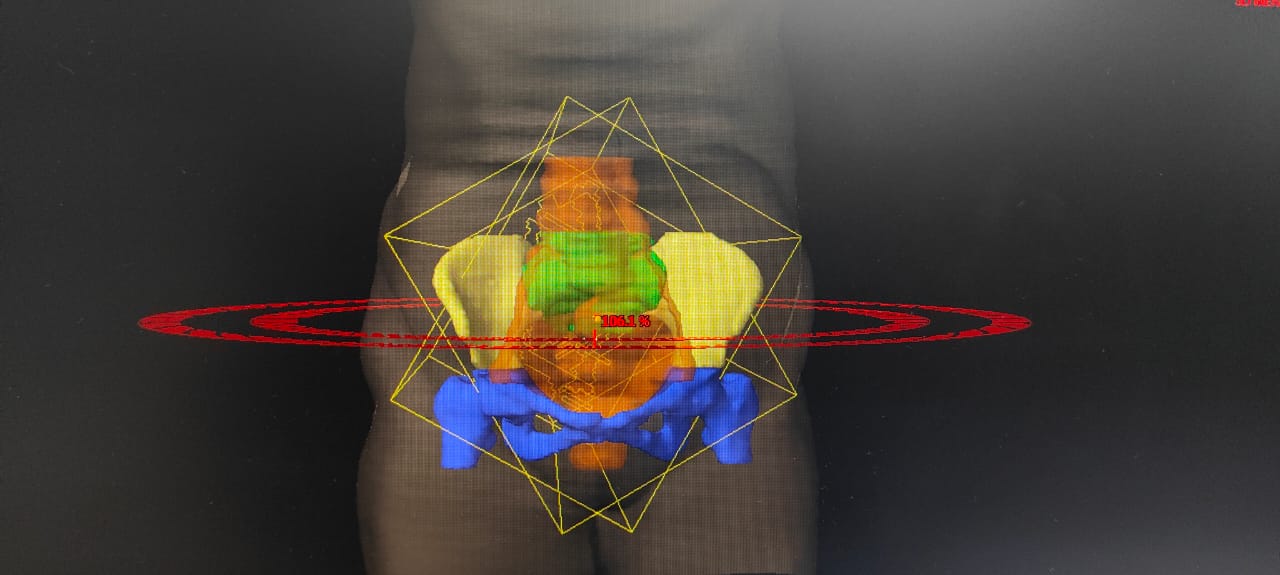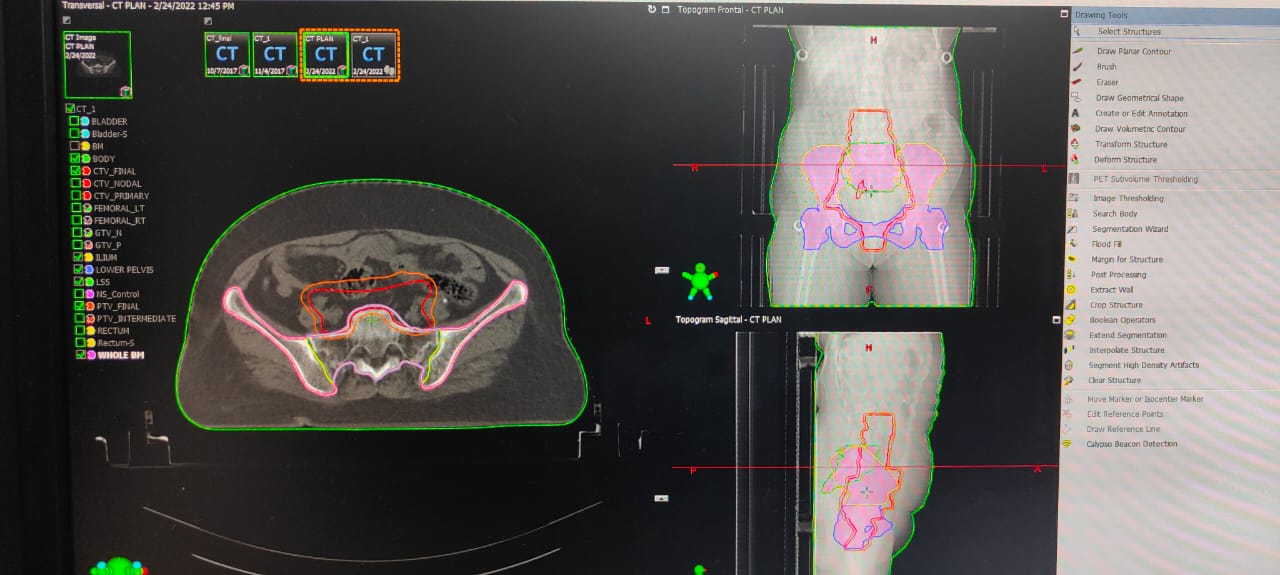Comparison of DVH of pelvic bone marrow in 2D vs VMAT and its clinical outcomes in carcinoma cervix
PO-1409
Abstract
Comparison of DVH of pelvic bone marrow in 2D vs VMAT and its clinical outcomes in carcinoma cervix
Authors: Sankalp Naidu1, Navya Madabattula2, Jaya Swathy.B3
1BIBI Cancer Hospital, Department of Radiation Oncology, Hyderabad, India; 2Queens NRI Hospital, Department of Radiation Oncology, Vishakapatnam, India; 3BIBI Cancer Hospital, Department of Radiation Oncology, HYDERABAD, India
Show Affiliations
Hide Affiliations
Purpose or Objective
Purpose
Radiotherapy (RT) occupies an important role in the treatment of gynecologic malignancies, notably cervical cancer. Most of the attention has been focused on gastrointestinal and genitourinary side effects mainly consisting of radiation-induced proctitis, fistulas, cystitis and small bowel obstruction. One side effect that has received very little attention is the hematologic toxicity (HT). However, with the increasing use of concomitant chemotherapy (CDDP), particularly in cervical cancer patients, HT is now one of the most common acute sequelae in gynecological patients undergoing RT.
Aims and objectives
To evaluate the DVH parameters of pelvic bone marrow and its sub sites and its clinical correlation with the hematological changes in patients of cancer cervix treated with conventional and VMAT Technique.
Material and Methods
Total fifty patients were included in this study between October 2019 to December 2021 which was randomized into two groups- Conventional Radiotherapy arm & VMAT (Volumetric Modulated Arc Therapy) arm, both having 25 patients each. Radiotherapy dose delivered was 50Gy in 25 fractions at 2Gy/day it was followed by 3 applications of intracavitary brachytherapy of 7Gy/ fraction each. Dose Volume Histograms of pelvic bone marrow (BM) and the subsites- Ilium, Lower Pelvis, Lumbo Sacral Spine and were also calculated. Assessment of hematological toxicity was done by RTOG (Radiation Therapy Oncology Group) scoring criteria.

Results
The median follow up time was 11 months. Due to the covid pandemic 4 patients expired and 9 patients defaulted treatment due to lockdown and were not included in the study. During treatment 12 patients developed hemoglobin grade I toxicity in arm I and 5 patient developed grade I toxicity in arm II, 9 patients developed grade II neutropenia in arm I and 3 patients developed grade I neutropenia in arm II & was highly significant (p<0.05). The BM-V10 V20 & V30 of lumbosacral spine (LSS) were less in the VMAT arm (99.69%, 79.74%, 42.97%) when compared to the conventional arm (100%, 95.46%, 85.04% ) and was highly significant (p<0.05). Similar values were seen in the ilium and lower pelvis subsites. Dosimetric parameters involving the LSS and lower pelvis had stronger associations with HT than did those involving the ilium in the VMAT arm. The mean doses received by the rectum and bladder were 52.26Gy and 51.64Gy in conventional arm & 34.42Gy & 40.39Gy in the VMAT arm & the p values were 0.0031 & 0.0038 (highly significant). On long term follow up 9 patients developed radiation proctitis in the conventional arm vs 2 in the VMAT arm. One patient developed local recurrence in the conventional arm.
Conclusion
Results of this study show that VMAT is safe and effective with a low incidence of acute hematological toxicity. Doses received by the bone marrow especially the LSS & the lower pelvis were higher when compared to other sites. Therefore, there is a need to contour bone marrow as a departmental protocol in gynaecological malignancies.